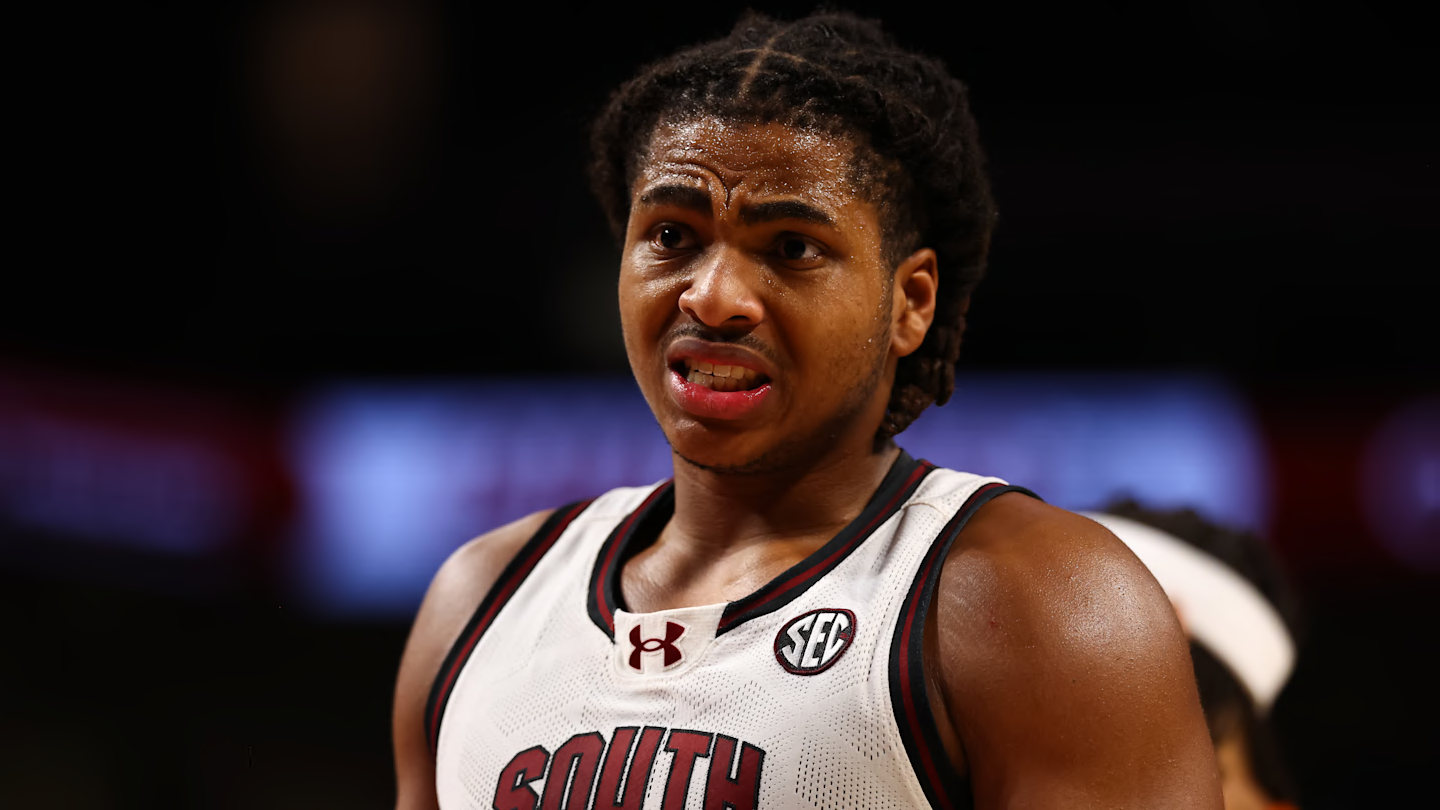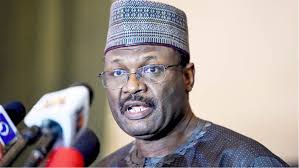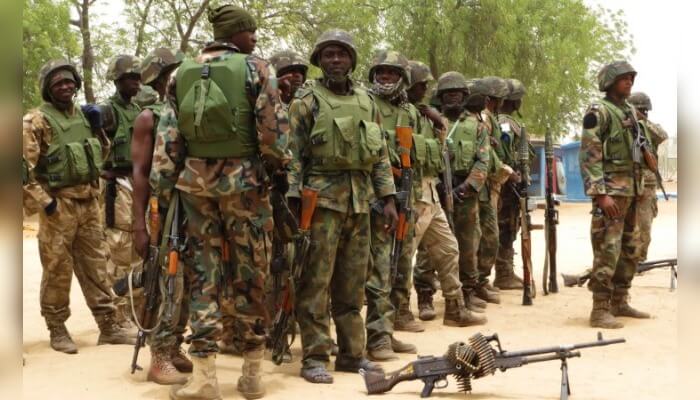Instant NBA Draft 2025 grades for every pick, starting with Cooper Flagg to the Mavs
The 2025 NBA Draft class has been endlessly debated over the last 12 months, with little consensus among the lottery prospects after Cooper Flagg and Dylan Harper come off the board with the first two picks. Finally, draft day is here, and the speculation about how certain players fit with certain teams will be over.
There’s no drama at the top of the draft. Flagg will be the new franchise player for the Dallas Mavericks just months after they traded their last franchise player, Luka Doncic, to the Los Angeles Lakers. Dylan Harper will join Victor Wembanyama in San Antonio for what the Spurs hope will be a championship duo. Then things get interesting. The Philadelphia 76ers hold the keys to the draft at No. 3 overall, and things only tougher to project after that.
Check out our top-60 big board for the 2025 NBA Draft. Read our long, reported features on Cooper Flagg and Collin Murray-Boyles. Scope out the three highly-touted prospects I’m fading in this class, and three sleepers I’m willing to bet on. You can also look at my first ever 2025 draft board, published the day after the 2024 draft, to see how much the first-round projection has changed over the last year. Here’s our final mock draft.
We’ll be giving out instant grades for every pick. Refresh this post often to see our analysis as every pick gets made. Let’s get into it.
: A+
Flagg is one of the strongest prospects I’ve evaluated since I started covering the draft here in 2014. He checks every box for a potential franchise player: he had elite production at a young age, he has a great frame for an NBA forward, the skills to dominate on or off-the-ball, and the athleticism to finish plays on both ends of the floor. Flagg’s elite mentality ties the whole package together: it feels like he plays harder than anyone else on the court despite always being the most talented player out there. He was arguably the best player in college basketball this past season despite being 17 years old for half the season after only three years of high school. He’s about to be the youngest player in the NBA, but he’s still going to be an instant contributor around Anthony Davis in Dallas. The Mavs winning the lottery completely makes up for their awful Luka Doncic trade. Good thing Flagg plays defense, so even Nico Harrison won’t trade him.
: A
Harper is a huge guard at 6’6 with a 6’10 wingspan who gets downhill with ease and converted a stunning 70 percent of his rim attempts as a freshman at Rutgers. He’s more of a scorer than a facilitator at this stage, but he still has solid playmaking vision and has shown some passing manipulation flashes. Harper should be able to guard multiple positions, and he’s especially solid on the ball. His ability to collapse the defenses off the bounce is going to make Victor Wembanyama’s life so much easier. He’s not the best shooter yet, which makes his fit next to Stephon Castle and De’Aaron Fox a bit less enticing. Still, Harper hit 37 percent of his spot-up threes and should be a fine player off the ball. Every team in the league wants big guards who can get into the paint, and the Spurs just landed one next to Wemby.
: B+
Edgecombe is a freak athlete who leverages his physical gifts to disrupt opposing offenses and get out in the open floor. He’s a solid spot-up shooter with easy three-point range, he’s a fantastic rebounder for a guard, and he generally does a good job avoiding turnovers. Edgecombe has a high floor because he’s a good defender with plenty of offensive utility. His ceiling will be determined by how his finishing and pull-up three-point shot develops. He’s an interesting fit for a Sixers team that already has two smaller guards to build around in Jared McCain and Tyrese Maxey, but Edgecombe has a case as the best player on the board, and that makes him a perfectly fine selection.
: A
Knueppel is an elite shooter who made better than 40 percent of his threes and 91 percent of his threes as the Robin to Cooper Flagg’s Batman at Duke. He’s a solid secondary playmaker who developed a nice connection in the pick-and-roll with another Duke lottery pick, Khaman Maluach, while also showing some ability to score on drives off two feet in the paint. Knueppel doesn’t look like a top-5 pick at first blush with only an average mix of length and explosiveness, but his strength, footwork, and knockdown shooting will make him a very good pro for a long time. I like his fit between LaMelo Ball and Brandon Miller as a connective piece who can play within a team structure and still figure out how to pick his spots and have a big impact.
: B
Bailey has an awesome combination of length, shot-making, and athletic explosiveness. He can splash shots from all over the floor, but tends to settle for difficult pull-ups because he doesn’t have the ball handling to get all the way to the rim. Bailey can struggle with his focus defensively, but he has the tools to recover to the ball and swat shots. I worry about his lack of passing vision if he’s going to step into a starring role on a Jazz roster that’s far away from competing. Still, Bailey should have a high floor with his physical gifts and shooting, and as the game slows down for him, he could easily end up as one of the better players in this class.
: B+
Johnson is an indefatigable shooter with a quick release and immense confidence that every shot is going in. The Texas freshman has a unique talent for bending defenses off the ball with his movement shooting, and he’s a an excellent pull-up shooter and mid-range shooter, too. Johnson’s intense mentality should be a welcome addition to a young and wayward Wizards team, and I think he’s better as a defender and passer than he’s given credit for, but he still has plenty of room to grow in those areas. Johnson needs to add strength to his thin frame and prove he can do more than settle for jump shots, but his shooting is so good that it’s hard to imagine him failing.
: B+
Fears only spent three years in high school before being thrown into the SEC fire and still leading Oklahoma to the NCAA tournament. He has the best combination of speed and ball handling in this class, and he doesn’t need a screen to beat his defender and get into the teeth of the defense. He has a very good mid-range/floater game for such a young player, and has already mastered the dark arts of getting fouled. Fears has only average size for an NBA lead guard, and he isn’t a good three-point shooter or rim finisher yet. Still, Fears thrived at a super young age against ultra difficult competition, and his best plays showed star upside. The Pelicans are swinging for the fences here.
: D
I named Demin as one of three prospects I’m fading in this draft. He absolutely has the talent to prove me wrong. The BYU freshman has a great combination of size (6’9) and passing, and looked like a top-5 pick at times this year against weak competition. The problem is that Demin’s production suffered against better competition when facing bigger and more athletic players. He lacks burst to beat anyone off the dribble as a ball handler, he’s a poor three-point shooter, and he’s too weak to compete defensively right now. Demin will have to improve his shot quite a bit to live up to this draft spot, but his size and passing gives him a chance.
: A
Murray-Boyles is the best defensive player in this draft. He also has plenty of offensive skills with impressive driving ability and great passing vision. He can overpower opposing players with his strength, and he can challenge shots and muck up the passing lanes with his length. The catch? Murray-Boyles is a bit short for a big man at 6’6.5 barefoot, and he isn’t a good shooter yet. Read my feature on how CMB is attacking his shooting development, and how he went from a three-star recruit to a top-10 pick. He’s one of the best all-around players in the draft, and he’s going to be a gem for a Toronto team ... as long as they can put some more shooting around him for a roster that already doesn’t have much shooting.
: A
Maluach was the No. 3 player on my board. I love his combination of length, finishing, and paint protection which gives him a high floor to impact the game. Maluach’s ceiling is dependent on how his three-point shooting and perimeter defense develops, and I’m willing to bet on him in both areas. The fact that he’s only been playing basketball for five years and is already this good is pretty amazing. The Suns badly needed a center, and Maluach falling to this spot is an incredible gift. He has the high upside Phoenix needs to salvage the Devin Booker era. This is my favorite pick of the draft.
: B-
Coward only played six games at Washington State this past season after starting his career in D3 and also spending two years at Washington State. His year ended early because of a torn labrum, but his defense and shooting projection was still encouraging enough to put Duke and Alabama in a bidding war for him in the transfer portal. Coward shot up the draft board at the combine, and is now a lottery pick. The Blazers traded this pick to the Grizzlies. I’m a bit skeptical of Coward just because he has played so few games against good competition, and hasn’t played well in those games. He’s the mystery man of this draft, but his ridiculous 7’2 wingspan and 40 percent three-point stroke is still a decent bet at this part of the draft.
: A-
Essengue has a ridiculous combination of length and athleticism, and he’s already been productive in a pro league as the second youngest prospect in this class. He’s at his best in transition, and the Bulls are a great fit for his skill set as a team that wants to play at a super fast tempo. Essengue is not yet a good shooter, handler, or passer, so the Bulls will need to develop his skill level. Still, it’s hard to find a big forward with this kind of mobility who has already put up good numbers against older competition. The Bulls need upside swings, and this counts as one.
: C+
The Pelicans traded an unprotected 2026 pick to Atlanta, a massive gamble to trade up 10 spots. Queen is an awesome driver and one-and-one scorer as a beefy 6’10 big man, but I’m skeptical of how he fits with New Orleans’ other first round pick, Jeremiah Fears. Both Fears and Queen need to play with the ball in their hands because neither is a good shooter yet. They are also both minus defenders. New Orleans does have some long and rangey wings to put around them in Trey Murphy III and Herb Jones, but who knows what to make of the Zion Williamson situation there now. I like Queen in a vacuum, but this is way too much to trade up for him, and that’s why the grade suffers.
: B+
Bryant has an ideal frame for an NBA forward at 6’8, 220 pounds, with a 7’1 wingspan. He’s one of the most explosive athletes in this class, which he leveraged to put up huge block and steal rates defensively. His offense is mostly undeveloped to this point, but he showed solid spot-up shooting at Arizona by hitting 37 percent of his threes as a freshman. What worries me about Bryant is that 80 percent of his baskets were assisted, and he can’t do much with the ball in his hands. That’s less of a concern for a team with Victor Wembanyama and Dylan Harper on the roster. This is a good fit between player and team,
: A-
Sorber is super long and super strong center with a 7’6 wingspan and 260+ pound frame. He’s a throwback big who sets hard screens, rebounds, and protects the rim. He doesn’t currently shoot threes and he doesn’t have great vertical athleticism yet. Still, this is an awesome fit to the OKC roster, and he should allow the team to move off Isaiah Hartenstein eventually for a cheaper backup center as the roster gets more expensive.
: D
I liked Hansen as a potential second rounder for his size and passing, but this is a shocking selection. The Blazers already have another huge center in Donovan Clingan who they took in the top-10 last year, and I don’t think they can play together. This is just confusing to me, but at least Portland did well to trade down and pick up extra assets.
: B-
Beringer has freaky physical tools as a 7-foot wingspan with sick athleticism. He’s a rim-running/rim-protecting big man who now gets to be tutored by a French legend in Rudy Gobert. This isn’t my favorite archetype for a center, but Beringer will be allowed to grow slowly in Minnesota. This is a pick with an eye on the future.
: B+
Clayton is a big-time shooter with the core strength to get off his shot from anywhere on the floor. He minted himself as an all-time March Madness hero on Florida’s run to the national championship, proving that he’s a big game player. He gives Utah’s backcourt a dimension it doesn’t already have. There should be some concerns with his size and age as a four-year player, but it’s hard to write off Clayton after how electric he was in the NCAA tournament.
: C+
Traore is one of the fastest players in the class with the ball in his hands. He has terrific standstill burst and can out-run anyone in the open floor. He put up big assist numbers in a high-usage role in a professional league, but his shooting and finishing left a lot to be desired. All those on-ball reps against good competition should serve Traore well, but there were other guards I liked better still on the board with this pick.
: A-
Jakucionis was projected as a top-5 pick earlier in the draft cycle until turnover issues tanked his stock. He still has a projectable NBA game with a strong frame, creative passing vision, pull-up shooting potential, and the ability to get to the free line. Jakucionis is a poor run-and-jump athlete who only dunked one time this year, but if his step-back three is falling, he’s very hard to guard. I’m shocked he fell this far.
: B
Riley is a skinny 6’8 microwave scorer who can get buckets in bunches. He’s a skilled pull-up shooter with touch from the three-point line and mid-range, and he’s not scared of contact despite his thin frame. He’s not much of a passer yet, and he’s going to be targeted defensively early in his career, but his size and shot-making combo is tough to find. The Wizards will be living and dying by the jump shot with Riley and Tre Johnson joining Bub Carrington and Alex Sarr.
: B-
I guess this is my favorite Nets pick so far? Powell is super athletic with long arms and some spot-up shooting ability. He should be a really good defender as he matures. His game reminds me a bit of Denver’s Peyton Watson. I don’t think he can do much off the bounce and he doesn’t make his teammates better as a passer, but if he can bulk up, he has all the tools to be a good wing defender.
: B+
Newell wasn’t one of my favorites, but this is a great range and good fit for him. He’s an athletic play-finisher who can run the floor with Trae Young and dunk everything that’s fed to him. I’m a bit worried that he’s too small to play center and not quick enough to play the wing, but at this point in the draft, who cares. The fact that the Hawks picked up the Pelicans’ unprotected 2026 draft pick to trade down for him makes this an A+ honestly.
: A-
Clifford doesn’t have a signature skill, but he’s solid in all aspects of the game. He started as a defense-first player, then developed as a shooter, then developed as a playmaker. It’s scary to take a five-year college player in the first-round with an elite trait, but Clifford’s improvement track, mentality, and all-around game makes him a great pick here.
: A
Perfect fit of player and team. Richardson is one of the better shooters in this draft, the Magic were the worst shooting team in the NBA last season. Orlando has the defense to cover up his size concerns, and his off-ball scoring should be a wonderful match around Paolo Banchero, Franz Wagner, and Desmond Bane. I had Richardson as a lottery pick on my board. His lack of size and his injury history (he had a hole in his femur a couple years ago that required a procedure) is scary, but he’s a really smart, really skilled player and a killer fit for Orlando.
: B
Saraf is a big guard who can play with pace, find open teammates, and hit shots from mid-range. He doesn’t have much range on his jumper yet, and teams will go under screens to dare him to pull-up from three. He’s been a productive player on the same team as Bulls’ pick Noa Essengue, and while his long-term physical tools aren’t as enticing, his game is more pro-ready right now.
: B
I wasn’t a big Danny Wolf guy, but this is a good range for him when I thought he could have gone 10 pick higher. Wolf is interesting because he’s as big as a center (7-foot, 250 pounds) but essentially played point guard for Michigan by running pick-and-rolls and hitting step-back threes. I am skeptical that he can stay in an on-ball role in the NBA, and I don’t trust his shooting enough to play off the ball. But hey, at No. 27. this is a good swing if the shooting comes around, or if he can cut down the turnovers.
: B
Gonzalez has a nice combo of frame and athleticism for an NBA wing. He made a name for himself playing with a high motor on Spain’s youth squads, and he should have translatable tools defensively. He couldn’t earn many minutes for Real Madrid last year, and that won’t change going to the Celtics even in a rebuilding year. Still, this is a fine pick as a long-term play.
: B
McNeeley was a shooter who couldn’t shoot at UConn, but his high school track record as a shooter is highly encouraging. An ankle injury ruined his season last year, and he just wasn’t the same when he came back. I am concerned that McNeeley just isn’t an NBA athlete, but at No. 29, this is a fine choice for a Hornets team that already added another knockdown shooter in Kon Knueppel.
: C
The Swiss center never looked like an NBA player to me at Penn State, but his stock blew up at the combine. He has good physical tools and a potential translation as a shot blocker in the NBA, but it’s concerning how he didn’t impact the game in many areas even at the college level.











